yacobchuk/iStock/GettyImages
Pick up a batch of crawdads if your family is craving Southern cooking, and your mouth is watering for some Cajun spices and seafood. Crawdads can be a treat for casual entertaining or a family dinner. If you're new to crawdads, don't let the look of these creatures scare you off. They're actually a breeze to prepare, and eating them is as entertaining for you and the kids as it is delicious.
Purchasing and Storing Crawdads
Also known as crayfish or crawfish, these freshwater crustaceans are related to the lobster, but are much more budget friendly. A standard rule of thumb is 2 to 3 pounds of crawdads per guest. Purchase live crawdads when in season, late winter to early spring, and keep them at about 40 degrees on wet burlap to keep them alive. They don't survive in freezing water, so only keep them on ice during transport.
Cleaning Crawdads
Rinse your crawfish in fresh water as soon as you get them home to clean off grit and dirt, and shower them once again just before cooking. They should be a lively bunch. Remove any dead ones and dispose of them. You actually don't need to do anything more. As long as they are cooked thoroughly, they will be safe to eat. Some recipes recommend a brief soak with salt water to purge the digestive tracts of the crawfish, but this approach is a waste of time. Purging isn’t necessary, but if you plan to do it, a brief soak won’t do the job, and salt will just kill more than necessary.
The Right Way to Purge
If you have the time and are willing to go through the trouble, purging the digestive tracts with fresh water will make the crawdads less gritty and taste fresher. They need to soak in a large container, such as a cooler, for a minimum of 24 hours. The problem with a long-term soak is that crawdads suck the oxygen out of the water quickly, and leaving them in the water that long would suffocate them. Chef Alton Brown, host of Good Eats, proposes a solution: rig up an aquarium air pump to aerate the water. If you don’t have a pump handy, change the water every couple of hours.
Crawdad Boil
Boiling is by far the favorite cooking method for crawfish. For small portions, a pot or two on the stove will suffice, but serious crawdaddy cookers will take them outside and boil them in a 40-quart pot set on a propane turkey fryer. Add your seasonings to taste -- crawdad boils often include cayenne pepper for some heat -- along with potatoes, corn, sliced sausage and other companions to the pot for a full meal.
How To Eat Crawdads
If you look at the top of a crawfish, you'll notice that its body is divided into three sections. The first is the head, the middle is the thorax, and the back is the tail. Grip the thorax with the fingers of one hand, and grip the tail with the fingers of the other. Push them together, twist, and pull them apart. Peel the tail and eat it much like a piece of shrimp. Sucking the head is a favorite part for crawdad lovers, but may turn off squeamish first-timers. It's not actually the head, it's the thorax. Put your mouth up to the hole left when you pulled out the tail. Tilt your head back, squeeze and suck the thorax at the same time. A couple of tries and you'll be throwing them back like a pro.
Related Articles

How to Boil 1.5 Pounds of Lobster
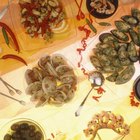
How to Clean Soft-Shell Clams (Steamers)

How to Remove Sand From Live Clams

Thawing Lobster Tails
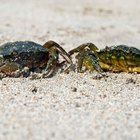
How to Clean Blue Crabs Before Cooking

How to Prepare Live Crawfish

How to Cook Live Lobster on the Grill

Cooking Half Shell Mussels
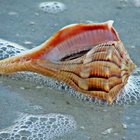
How to Cook Lightning Whelks

How to Steam Lobster & Shrimp
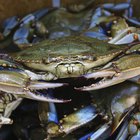
How to Cook Dead Crab

How to Boil Lobster at Home
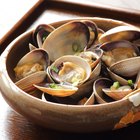
How to Cook Clams in the Shell

Do Lobsters Make Noise When Being ...

How to Freeze Black-eyed Peas

Can You Refreeze Shrimp That Has Been ...
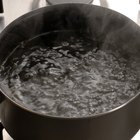
How to Cook Pig Tails
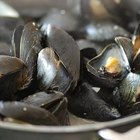
How to Clean Mussels With Cornmeal

How to Sanitize Cooking Utensils With ...
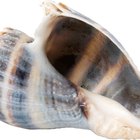
How to Remove Whelk Shells